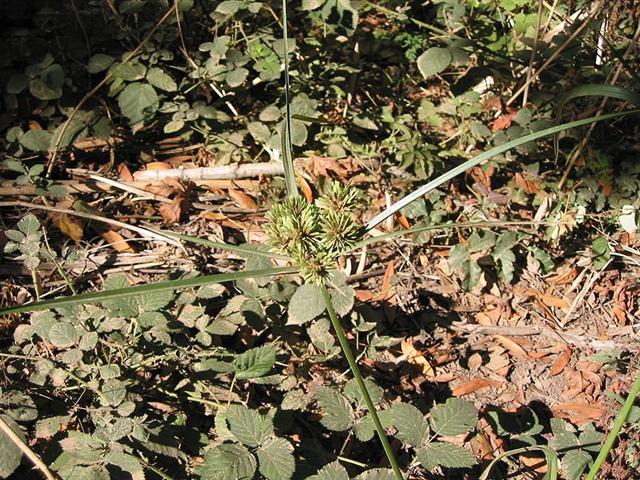|
TRANSLATIONS
We must not give up the important general task of finding some point of connection in time-space between G and K on one hand and H, P, and Q on the other. Why not turn the question around and ask where 'feathered fishes' appear in G or K? Sorry! There is not one 'feathered fish' in G or K. And neither is there any pare. Only rare glyph types will do for establishing a possible connection. Let us try with manu kake:
There are only these three manu kake glyphs in G and K. Kb1-7 should be in parallel with Ga4-21, but isn't:
It is the first glyph in the long damaged 16th 'period', which corresponds to 'periods' 16-18 in G, and beyond Kb1-14 there probably once were another 5 glyphs (i.e. once there were 13 glyphs in 'period' 16). But in G manu kake with fish at center arrives earlier, in 'period' 14:
So much can be said, however, that manu kake with fish center belongs in spring:
Ga4-21 is located 18 glyphs from the beginning of spring, and then follows 50 more spring glyphs. 4 * 21 = 84, may also suggest a final here of the very first spring days. The rising fish in the middle presumably does not live in the 'sea', but rather shows how sun at last has arrived and started his climb. Let us try to count also in K, and let us begin with Ka5-1:
Moving step by step should mean we ought first to go up to 'period' number 13:
This is interesting: Ga4-25--26 is a pair like Ga4-2--3, though here henua comes first, and in K there are no corresponding pair, neither here nor in the 7th 'period'. It is fairly obvious from the numbers, that period 13 is the beginning of something new. Yet, we are still far from 'high summer':
We should notice that Ga4-21 has the same ordinal number in line a4 as Kb1-7 has counted from Ka5-1. We do not have to go further for the moment, we have established the whereabouts of manu kake with fishy bottom in G and K. And we do not need to understand the meaning of this variant of manu kake, we will only try to use it as a point of reference in relation to H, P, and Q. Q does not offer any manu kake of this type, but in H and P we have three possible glyphs in each text:
The 'candidates' are located in parallel, and must be regarded as a single glyph (Ha7-102, Pa6-48) together with a pair (Ha12-7 + 9, Pb1-25 + b2-3). Let us concentrate on Pa6-48:
There are many useful signs among these glyphs. 6 * 48 = 288 = 2 * 12 * 12, together with the peculiar 'eyes' in Pa6-46 could indicate some kind of correspondence with for instance Ga4-23--24 (with 12 internal wedge marks):
The 'fish' being swallowed in Pa6-48 looks similar to Aa6-67, which we have earlier suggested is located in the middle of summer:
The sun fish is being swallowed, at least his head. But the opposite seems to occur in Ga4-21 and Kb1-7 - it is the opposite in timespace, the fish is the swallower of the bird. We can conclude that Pa6-48 indeed is located at midsummer, and that the appearance of an opposite kind of glyph in G and K may be due to a glyph play, alluding to midsummer but telling the story upside down, because it is not the end of spring (the fish) but its beginning. We know much about the overall structure in G and K, and we may here have an important connection between A and H/P/Q. We must take care of the pieces of the puzzle as they come or we will hardly get anywhere. The peculiar eyes in Pa6-46 enable us to connect with the text in S:
Pa6-44 and Pa6-47 have their counterparts too, which makes us sure of a parallel subject. Haga rave in Sb6-123 could therefore refer to midsummer. There are no more 'peculiar eyes' glyphs of this type in any of the other rongorongo texts. In G and K glyphs similar to Pa6-44 appear immediately beyond the kiore - henua season:
However, there is no sign of them being 'ghostly' (as in Pa6-44 and Sb6-118).
Probably Ga7-12 and Kb4-16 mark the turning point at midsummer. With no fish being swallowed, as far as I can see, the fish (sun) may be turned upside down with his tail being the top of the otherwise (possibly) normally 'ghostly' ika hiku glyph. Another glyph play? Or do we see a fish with tail both at the top and the bottom - indicating the reversal. That is more probable. Moreover, haga rave in Sb6-123 may have its correspondence in the top form in Ga7-12.
Metoro saw caudal fin fishes (ika hiku) in these three glyphs:
In Aa6-26 I receive support for seeing a double-tailed fish in the G and K glyphs. The distance from Aa6-26 to Aa6-67 is 42 glyphs (if both Aa6-26 and Aa6-67 are counted). The rat in hikukio'e of course is the sun, with the 6 'spidery' legs:
We must document here the two ika hiku glyphs in B too:
In Bb2-13 ika hiku has flipped around again into vaha mea position.
Bb12-11--12 are important, because they lead on into a complex of parallel texts, for instance:
Bb11-39, we suddenly realize, could be a slightly different kind of the 'peculiar eyes' sign:
|
|||||||||||||||||||||||||||||||||||||||||||||||||||||||||||||||||||||||||||||||||||||||||||||||||||||||||||||||||||||||||||||||||||||||||||||||||||||||||||||||||||||||||||||||||||||||||||||||||||||||||||||||||||||||||||||||||||||||||||||||||||||||||||||||||||||||||||||||||||||||||||||||||||||||||||||||||||||||||||||||||||||||||||||||||||||||||||||||||||||||||||||||||||||||||||||||||||||||||||||||||||||||




























































